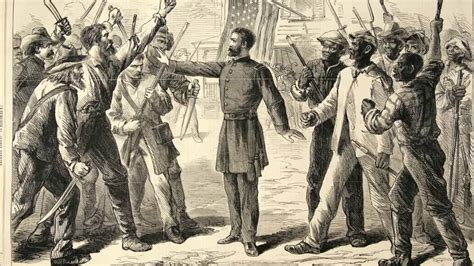The American Civil War, fought from 1861 to 1865, was a pivotal moment in United States history. It tested the nation’s foundation and ultimately led to the abolition of slavery. This article will delve into the causes, events, and consequences of the Civil War, providing a comprehensive overview of this transformative period.

Causes of the Civil War
The Civil War was a complex conflict with multifaceted causes, including:
- Economic Differences: The North had a thriving industrial economy, while the South relied heavily on agriculture, particularly cotton. These economic disparities led to differing opinions on issues such as tariffs and slavery.
- Social Differences: The North and South had vastly different social structures. In the North, free labor and urbanization were prevalent, while in the South, slavery and a plantation-based economy dominated.
- Political Differences: The issue of slavery divided the nation. The North generally opposed slavery, while the South vehemently defended it as essential to their way of life.
Prelude to the War
Tensions between the North and South escalated throughout the 1850s, fueled by events such as:
- Compromise of 1850: This legislation attempted to resolve the issue of slavery in the territories, but ultimately failed to quell tensions.
- Kansas-Nebraska Act of 1854: This act repealed the Missouri Compromise and allowed for popular sovereignty in the territories, igniting the violent struggle known as “Bleeding Kansas.”
- Dred Scott v. Sandford: The Supreme Court ruled that slaves were not US citizens and could not sue in federal court, further inflaming tensions.
The Outbreak of the War
In December 1860, Abraham Lincoln, a Republican opposed to the expansion of slavery, was elected president. In response, seven Southern states seceded from the Union, forming the Confederate States of America. Confederate forces fired on Fort Sumter in Charleston Harbor, South Carolina, on April 12, 1861, marking the beginning of the Civil War.
The Course of the War
The Civil War was one of the deadliest conflicts in American history. Major battles included:
- First Battle of Bull Run (1861): Confederate forces defeated the Union, boosting their morale.
- Battle of Antietam (1862): Union forces halted Confederate General Robert E. Lee’s invasion of the North, providing a pivotal victory.
- Battle of Vicksburg (1863): Union forces captured Vicksburg, Mississippi, controlling the Mississippi River and cutting off the Confederacy.
- Battle of Gettysburg (1863): Union forces defeated Lee’s army in a decisive battle.
- Battle of Appomattox Court House (1865): Lee surrendered to Union General Ulysses S. Grant, effectively ending the war.
The Consequences of the War
The Civil War had profound consequences for the United States, including:
- End of Slavery: The 13th Amendment to the Constitution abolished slavery, freeing approximately 4 million enslaved people.
- Birth of the Republican Party: The Republican Party, founded in 1854, became the dominant political force in the North.
- Reconstruction: The period after the war focused on rebuilding the nation and reintegrating the South into the Union.
- National Unity: The Civil War strengthened the nation’s sense of unity, but tensions between the North and South persisted for decades.
Tips and Tricks for Studying APUSH Civil War
- Read the textbook thoroughly and take notes.
- Use study guides and practice questions to reinforce concepts.
- Focus on key events, figures, and causes.
- Understand the political, social, and economic factors that led to the war.
- Analyze primary sources, such as letters, speeches, and newspapers.
Common Mistakes to Avoid
- Assuming the North was solely motivated by abolishing slavery.
- Oversimplifying the causes of the war as solely economic.
- Underestimating the role of slavery as a central issue.
- Ignoring the significant social and cultural differences between the North and South.
- Failing to understand the complexity of Reconstruction.
Step-by-Step Approach to Studying APUSH Civil War
- Identify the Causes: Understand the economic, social, and political factors that contributed to the war.
- Timeline of Events: Create a timeline of key events, from the Compromise of 1850 to the Battle of Appomattox Court House.
- Analyze Major Battles: Study the major battles of the war, including their strategies, outcomes, and significance.
- Consequences: Examine the impact of the war on slavery, national unity, and Reconstruction.
By following these tips and avoiding common mistakes, students can effectively prepare for the APUSH Civil War exam. Understanding the causes, events, and consequences of this pivotal conflict will provide a solid foundation for historical analysis and writing.
